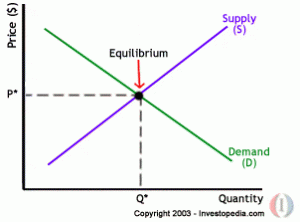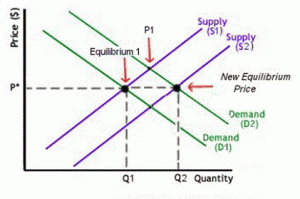I was just going through a study in the IBM Redbook called ‘Mainframe Modernization and Skills’ and it was indeed a reality check.
A formal survey conducted by Vanson Bourne, commissioned by Compuware, reinforced my belief that mainframe technology is not going to cease as 89% of the mainframe users have confirmed that they will not be decommissioning the mainframes, at least for the next five years.
In this article, I have tried to paint a picture of the demand and supply mismatch of the skilled mainframe resources.
The Demand Side:
Based on the recent Vanson Bourne, which sampled 520 respondents, the following statistics clearly indicate
- 62% of the users agreed that they are expanding their mainframe usage from a back-end system to a more front-end, user-facing application including the mobile apps
- 89% of the users want to retain mainframes in their organization for at least five years; more than one-third intended to use it for 10-20 more years
- Based on the platform expansion and the current growth pattern, IBM predicts that roughly 37,000 new mainframe administration positions would crop up by 2020
- Since most of the current mainframe users would retire by then, this figure will rise to 84,000 by 2020
- 20% of the companies surveyed, admitted that they need additional mainframe-skilled resources now, 15% would need them in 1-3 years and 27% in 3-5 years. This eventually indicates that 62% of the current mainframe clients will be requiring an additional mainframe expertise in the next five years
The Supply Side:
Although I could not find a quantitative estimate of the current mainframe expertise or the
five-year prediction of the same, following is a qualitative analysis based on my experience and observation:
- There would be two major splits in the population of the current mainframe professionals in the next five years. The first part would retire and the second part would climb the corporate ladder and would be involved in managerial activities rather than pure technical coding
- In my opinion, the current generation is very much hesitant to work on the legacy mainframe technology as they are under an impression that the future of the technology is bleak
- Hence, there is going to be a great vacuum in this area and gradually the rich expertise in the technology will start depleting
What does this Demand & Supply Gap Chart imply?

To understand the effect of this speculated demand and supply gap, we need to dig into some economic concepts.
Whenever, the demand of a resource is equal to its supply, economic equilibrium of price is stricken, implying that at this price all the units of a commodity produced are completely consumed.
But, as demand surpasses the supply, this equilibrium is disturbed, meaning that the production of the commodity is not enough to satisfy all the consumer needs. As the scarcity increases, the consumers’ willingness to pay increases to acquire the commodity and satisfy their need. Therefore, the prices soar.

In the figure above, D1 and S1 were the demand and supply earlier with P* as the equilibrium price. Say now the demand increased and led to a shift in demand curve; the new curve is D2. As you can see, D2 intersects with S1 at point P1, which is greater than P*. Evidently, there is an increase in the price of the commodity.
Do note that there is an additional curve S2 in the figure. As the price became P1, the suppliers got surplus cash and in turn were able to produce more units. This in turn led to a suppression of the increased demand and equilibrium was shot again.
But, this would not be the case here. Since we are talking about the skilled mainframe resources and it takes a considerable number of years to acquire those skills, the supply would not be able to match the demand for some time at least, giving a window to the skilled professionals to enjoy the high price window. As a result, by 2020, anyone having the required mainframe skills would be the most important asset for an organization whose business runs on mainframes.
As a concluding note, I would just like to reiterate myself that mainframe technology has a positive future and now I have backed up my belief by numbers as well. There is going to be an enormous supply-demand gap shortly and the most intelligent ones would exploit this opportunity to rule this space!



